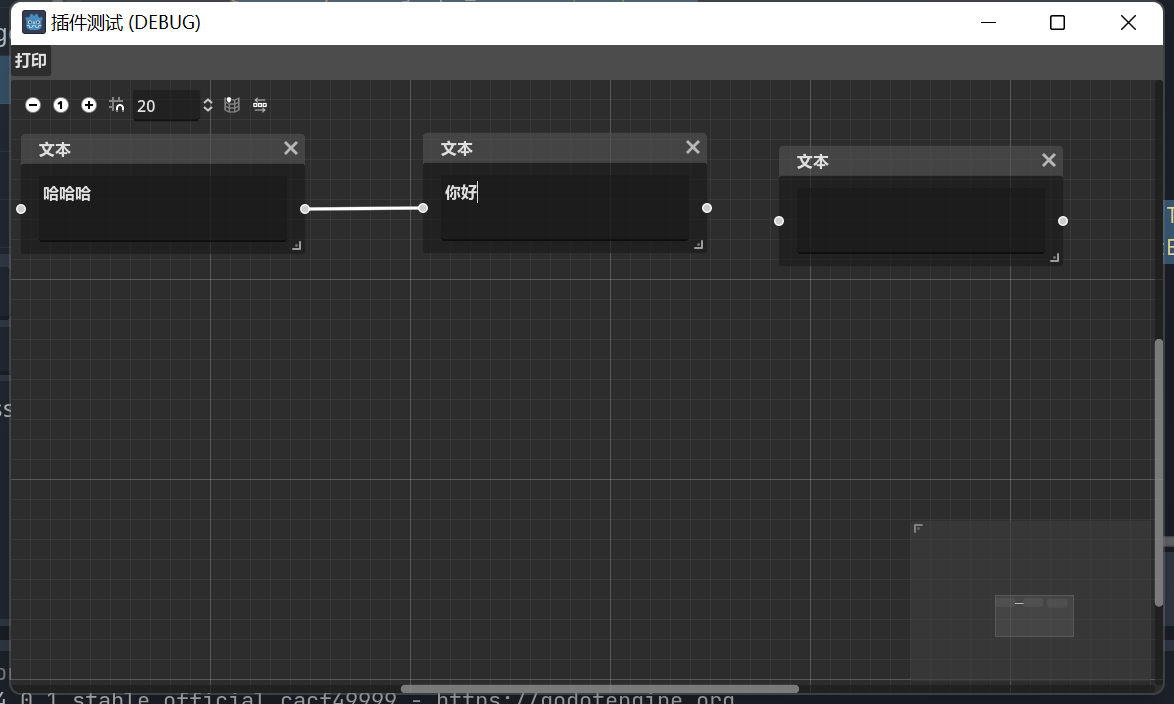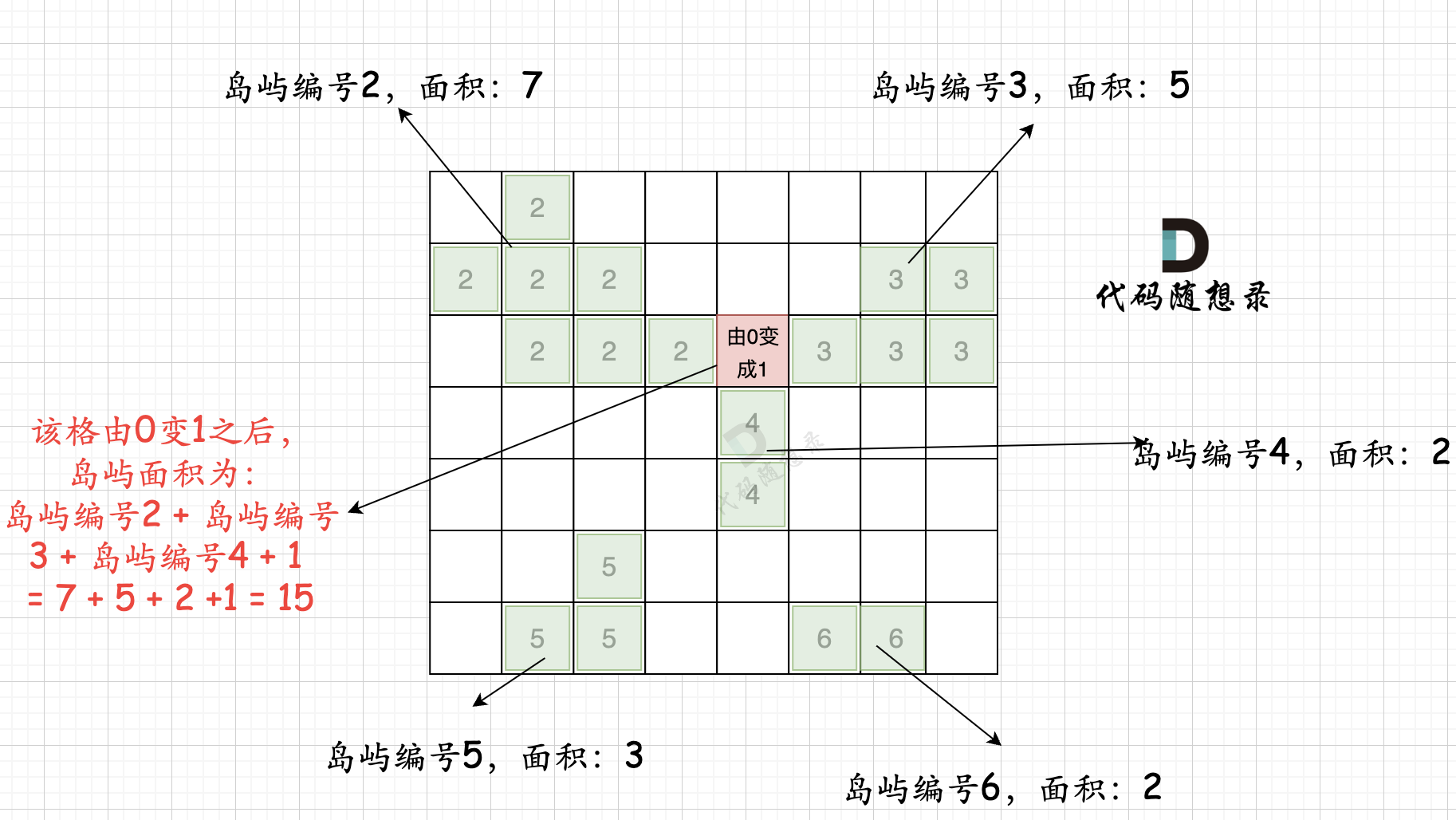
前言
系列专栏:【深度学习:算法项目实战】✨︎
涉及医疗健康、财经金融、商业零售、食品饮料、运动健身、交通运输、环境科学、社交媒体以及文本和图像处理等诸多领域,讨论了各种复杂的深度神经网络思想,如卷积神经网络、循环神经网络、生成对抗网络、门控循环单元、长短期记忆、自然语言处理、深度强化学习、大型语言模型和迁移学习。
随着全球能源结构的不断转型和可持续发展战略的深入实施,风能作为一种清洁、可再生的能源,其在全球能源供应中的地位日益凸显。风力涡轮机作为风能利用的主要设备,其发电量的准确预测对于电力系统的稳定运行、优化调度以及风电的并网消纳具有重要意义。然而,由于风能的间歇性和不稳定性,风力涡轮机的发电量预测成为了一个极具挑战性的任务。
近年来,深度学习技术在时间序列预测领域展现出了强大的潜力,特别是循环神经网络(RNN)及其变体,如长短期记忆网络(LSTM)和门控循环单元(GRU),在处理序列数据方面表现出色。双向门控循环单元(BiGRU)作为GRU的一种扩展,通过同时考虑序列数据中的过去和未来信息,进一步提高了模型捕捉长期依赖关系的能力。此外,注意力机制(Attention)的引入,使得模型能够动态地调整不同时间步长输入特征的权重,从而更加关注对预测结果影响较大的关键信息。
基于上述背景,本文提出了基于BiGRU+Attention的风力涡轮机发电量时序预测模型,旨在通过结合BiGRU和Attention机制的优势,提高风力涡轮机发电量预测的准确性和效率。该模型不仅能够捕捉风力发电量数据中的时序依赖关系,还能通过注意力机制关注对预测结果更为重要的输入特征,从而在复杂多变的风电环境中实现高精度的预测。
本文首先介绍了研究背景与意义,概述了BiGRU和Attention机制的基本原理及其在风力涡轮机发电量预测中的应用潜力。随后,详细描述了模型的构建与训练过程,包括数据收集与预处理、特征提取、时间序列建模、预测输出以及模型训练与性能评估等关键步骤。通过实际案例分析和实验结果展示,验证了该模型在风力涡轮机发电量预测中的有效性和优越性。
基于BiGRU+Attention实现风力涡轮机发电量时序预测
- 1. 数据集介绍
- 2. 数据预处理
- 3. 数据可视化
- 3.1 数据相关性
- 4. 特征工程
- 4.1 特征缩放(归一化)
- 4.2 构建时间序列数据
- 4.3 数据集划分
- 4.4 数据集张量
- 5. 构建时序模型(TSF)
- 5.1 构建BiGRU_Attention模型
- 5.2 定义模型、损失函数与优化器
- 5.3 模型概要
- 6. 模型训练与可视化
- 6.1 定义训练与评估函数
- 6.2 绘制训练与验证损失曲线
- 7. 模型评估与可视化
- 7.1 构建预测函数
- 7.2 验证集预测
- 7.3 回归拟合图
- 7.4 评估指标
1. 数据集介绍
在风力涡轮机中,Scada 系统测量并保存风速、风向、发电量等数据,时间间隔为 10 分钟。该文件取自土耳其一台正在发电的风力涡轮机的 scada 系统。原数据英文及解释如下:
- Date/Time (for 10 minutes intervals)
- LV ActivePower (kW): The power generated by the turbine for that moment
- Wind Speed (m/s): The wind speed at the hub height of the turbine (the wind speed that turbine use for electricity generation)
- Theoretical_Power_Curve (KWh): The theoretical power values that the turbine generates with that wind speed which is given by the turbine manufacturer
- Wind Direction (°): The wind direction at the hub height of the turbine (wind turbines turn to this direction automaticly)
import numpy as np
import pandas as pd
import matplotlib.pyplot as plt
import seaborn as sns
from sklearn.preprocessing import StandardScaler
from sklearn.model_selection import train_test_split
from sklearn.metrics import mean_absolute_error, \
mean_absolute_percentage_error, \
mean_squared_error, root_mean_squared_error, \
r2_score
import torch
import torch.nn as nn
import torch.nn.functional as F
from torch.utils.data import TensorDataset, DataLoader, Dataset
from torchinfo import summary
np.random.seed(0)
data = pd.read_csv("T1.csv")
data.head(10).style.background_gradient(cmap='bone')

2. 数据预处理
现在,我们使用 pandas.to_datetime 函数,将日期解析为时间数据类型
print(type(data['LV ActivePower (kW)'].iloc[0]),type(data['Date/Time'].iloc[0]))
# Let's convert the data type of timestamp column to datatime format
data['Date/Time'] = pd.to_datetime(data['Date/Time'],format='%d %m %Y %H:%M')
print(type(data['LV ActivePower (kW)'].iloc[0]),type(data['Date/Time'].iloc[0]))
cond_1 = data['Date/Time'] >= '2018-01-01 00:00:00'
cond_2 = data['Date/Time'] <= '2018-01-07 23:59:59'
data = data[cond_1 & cond_2]
print(data.shape)
<class 'numpy.float64'> <class 'str'>
<class 'numpy.float64'> <class 'pandas._libs.tslibs.timestamps.Timestamp'>
(987, 5)
3. 数据可视化
3.1 数据相关性
使用 data.corr() 计算相关系数矩阵
correlation = data.corr()
print(correlation['LV ActivePower (kW)'].sort_values(ascending=False))
LV ActivePower (kW) 1.000000
Theoretical_Power_Curve (KWh) 0.996930
Wind Speed (m/s) 0.965048
Wind Direction (°) 0.217183
Date/Time -0.028100
Name: LV ActivePower (kW), dtype: float64
plt.figure(figsize=(10, 8)) # 设置图片大小
sns.heatmap(correlation, annot=True, cmap=sns.cubehelix_palette(dark=.20, light=.95, as_cmap=True), linewidths=0.5)
plt.show()

很明显,LV ActivePower (kW) 与 Theoretical_Power_Curve (KWh)、Wind Speed (m/s) 存在强相关性
4. 特征工程
4.1 特征缩放(归一化)
StandardScaler()函数将数据的特征值转换为符合正态分布的形式,它将数据缩放到均值为0,标准差为1的区间。在机器学习中,StandardScaler()函数常用于不同尺度特征数据的标准化,以提高模型的泛化能力。
# 使用选定的特征来训练模型
features = data.drop('Date/Time', axis=1)
target = data['LV ActivePower (kW)'].values.reshape(-1, 1)
# 创建 StandardScaler实例,对特征进行拟合和变换,生成NumPy数组
scaler = StandardScaler()
features_scaled = scaler.fit_transform(features)
target_scaled = scaler.fit_transform(target)
print(features_scaled.shape, target_scaled.shape)
4.2 构建时间序列数据
我们创建一个时间序列数据,时间步 time_steps 假设设置为10
time_steps = 10
X_list = []
y_list = []
for i in range(len(features_scaled) - time_steps):
X_list.append(features_scaled[i:i+time_steps])
y_list.append(target_scaled[i+time_steps])
X = np.array(X_list) # [samples, time_steps, num_features]
y = np.array(y_list) # [target]
samples, time_steps, num_features = X.shape
4.3 数据集划分
train_test_split 函数将数组或矩阵随机分成训练子集和测试子集。
X_train, X_valid,\
y_train, y_valid = train_test_split(X, y,
test_size=0.2,
random_state=45,
shuffle=False)
print(X_train.shape, X_valid.shape, y_train.shape, y_valid.shape)
以上代码中 random_state=45 设置了随机种子,以确保每次运行代码时分割结果的一致性。shuffle=False 表示在分割数据时不进行随机打乱。如果设置为True(默认值),则会在分割之前对数据进行随机打乱,这样可以增加数据的随机性,但时间序列数据具有连续性,所以设置为False。
4.4 数据集张量
# 将 NumPy数组转换为 tensor张量
X_train_tensor = torch.from_numpy(X_train).type(torch.Tensor)
X_valid_tensor = torch.from_numpy(X_valid).type(torch.Tensor)
y_train_tensor = torch.from_numpy(y_train).type(torch.Tensor).view(-1, 1)
y_valid_tensor = torch.from_numpy(y_valid).type(torch.Tensor).view(-1, 1)
print(X_train_tensor.shape, X_valid_tensor.shape, y_train_tensor.shape, y_valid_tensor.shape)
以上代码通过 train_test_split 划分得到的训练集和验证集中的特征数据 X_train、X_valid 以及标签数据 y_train、y_valid 从 numpy 数组转换为 PyTorch 的张量(tensor)类型。.type(torch.Tensor) 确保张量的数据类型为标准的 torch.Tensor 类型,.view(-1, 1) 对张量进行维度调整
class DataHandler(Dataset):
def __init__(self, X_train_tensor, y_train_tensor, X_valid_tensor, y_valid_tensor):
self.X_train_tensor = X_train_tensor
self.y_train_tensor = y_train_tensor
self.X_valid_tensor = X_valid_tensor
self.y_valid_tensor = y_valid_tensor
def __len__(self):
return len(self.X_train_tensor)
def __getitem__(self, idx):
sample = self.X_train_tensor[idx]
labels = self.y_train_tensor[idx]
return sample, labels
def train_loader(self):
train_dataset = TensorDataset(self.X_train_tensor, self.y_train_tensor)
return DataLoader(train_dataset, batch_size=32, shuffle=True)
def valid_loader(self):
valid_dataset = TensorDataset(self.X_valid_tensor, self.y_valid_tensor)
return DataLoader(valid_dataset, batch_size=32, shuffle=False)
在上述代码中,定义了一个名为 DataHandler 的类,它继承自 torch.utils.data.Dataset
__init__ 方法用于接收数据和标签。__len__ 方法返回数据集的长度。__getitem__ 方法根据给定的索引 idx 返回相应的数据样本和标签。
data_handler = DataHandler(X_train_tensor, y_train_tensor, X_valid_tensor, y_valid_tensor)
train_loader = data_handler.train_loader()
valid_loader = data_handler.valid_loader()
5. 构建时序模型(TSF)
5.1 构建BiGRU_Attention模型
class BiGRU_Attention(nn.Module):
def __init__(self,
input_dim,
hidden_dim,
num_layers,
output_dim,
num_heads
):
super(BiGRU_Attention, self).__init__()
self.hidden_dim = hidden_dim
self.num_layers = num_layers
self.bigru = nn.GRU(
input_dim,
hidden_dim,
num_layers=num_layers,
batch_first=True,
bidirectional=True)
self.attention = nn.MultiheadAttention(
embed_dim=hidden_dim*2,
num_heads=num_heads,
batch_first=True)
self.dropout = nn.Dropout(p=0.5)
self.fc = nn.Linear(hidden_dim*2, output_dim)
def forward(self, x):
# x: [batch_size, seq_len, input_dim]
# h0: [num_layers * num_directions, batch_size, hidden_dim]
h0 = torch.zeros(self.num_layers*2, x.size(0), self.hidden_dim).to(x.device)
out, _ = self.bigru(x, h0)
drop_gruout = self.dropout(out)
# 注意力层
attn_output, _ = self.attention(drop_gruout, drop_gruout, drop_gruout)
drop_output = self.dropout(attn_output[:, -1, :])
# 全连接层
out = self.fc(drop_output)
return out
5.2 定义模型、损失函数与优化器
model = BiGRU_Attention(input_dim = num_features,
hidden_dim = 8,
num_layers = 2,
output_dim = 1,
num_heads = 16)
criterion_mse = nn.MSELoss() # 定义均方误差损失函数
criterion_mae = nn.L1Loss() # 定义平均绝对误差损失
optimizer = torch.optim.Adam(model.parameters(), lr=1e-04) # 定义优化器
nn.L1Loss() 是 PyTorch 中的一个损失函数,用于计算模型预测值和真实值之间的平均绝对误差(Mean Absolute Error, MAE)
5.3 模型概要
# batch_size, seq_len(time_steps), input_size(in_channels)
summary(model, (32, time_steps, num_features))
==========================================================================================
Layer (type:depth-idx) Output Shape Param #
==========================================================================================
BiGRU_Attention [32, 1] --
├─GRU: 1-1 [32, 10, 16] 1,920
├─Dropout: 1-2 [32, 10, 16] --
├─MultiheadAttention: 1-3 [32, 10, 16] 1,088
├─Dropout: 1-4 [32, 16] --
├─Linear: 1-5 [32, 1] 17
==========================================================================================
Total params: 3,025
Trainable params: 3,025
Non-trainable params: 0
Total mult-adds (Units.MEGABYTES): 0.61
==========================================================================================
Input size (MB): 0.01
Forward/backward pass size (MB): 0.04
Params size (MB): 0.01
Estimated Total Size (MB): 0.05
==========================================================================================
6. 模型训练与可视化
6.1 定义训练与评估函数
def train(model, iterator, optimizer):
epoch_loss_mse = 0
epoch_loss_mae = 0
model.train() # 确保模型处于训练模式
for batch in iterator:
optimizer.zero_grad() # 清空梯度
inputs, targets = batch # 获取输入和目标值
outputs = model(inputs) # 前向传播
loss_mse = criterion_mse(outputs, targets) # 计算损失
loss_mae = criterion_mae(outputs, targets)
combined_loss = loss_mse + loss_mae # 可以根据需要调整两者的权重
combined_loss.backward()
optimizer.step()
epoch_loss_mse += loss_mse.item() # 累计损失
epoch_loss_mae += loss_mae.item()
average_loss_mse = epoch_loss_mse / len(iterator) # 计算平均损失
average_loss_mae = epoch_loss_mae / len(iterator)
return average_loss_mse, average_loss_mae
上述代码定义了一个名为 train 的函数,用于训练给定的模型。它接收模型、数据迭代器、优化器作为参数,并返回训练过程中的平均损失。
def evaluate(model, iterator):
epoch_loss_mse = 0
epoch_loss_mae = 0
model.eval() # 将模型设置为评估模式,例如关闭 Dropout 等
with torch.no_grad(): # 不需要计算梯度
for batch in iterator:
inputs, targets = batch
outputs = model(inputs) # 前向传播
loss_mse = criterion_mse(outputs, targets) # 计算损失
loss_mae = criterion_mae(outputs, targets)
epoch_loss_mse += loss_mse.item() # 累计损失
epoch_loss_mae += loss_mae.item()
return epoch_loss_mse / len(iterator), epoch_loss_mae / len(iterator)
上述代码定义了一个名为 evaluate 的函数,用于评估给定模型在给定数据迭代器上的性能。它接收模型、数据迭代器作为参数,并返回评估过程中的平均损失。这个函数通常在模型训练的过程中定期被调用,以监控模型在验证集或测试集上的性能。通过评估模型的性能,可以了解模型的泛化能力和训练的进展情况。
epoch = 500
train_mselosses = []
valid_mselosses = []
train_maelosses = []
valid_maelosses = []
for epoch in range(epoch):
train_loss_mse, train_loss_mae = train(model, train_loader, optimizer)
valid_loss_mse, valid_loss_mae = evaluate(model, valid_loader)
train_mselosses.append(train_loss_mse)
valid_mselosses.append(valid_loss_mse)
train_maelosses.append(train_loss_mae)
valid_maelosses.append(valid_loss_mae)
print(f'Epoch: {epoch+1:02}, Train MSELoss: {train_loss_mse:.5f}, Train MAELoss: {train_loss_mae:.3f}, Val. MSELoss: {valid_loss_mse:.5f}, Val. MAELoss: {valid_loss_mae:.3f}')
Epoch: 01, Train MSELoss: 0.86945, Train MAELoss: 0.852, Val. MSELoss: 1.08921, Val. MAELoss: 0.997
Epoch: 02, Train MSELoss: 0.82845, Train MAELoss: 0.827, Val. MSELoss: 1.07914, Val. MAELoss: 0.992
Epoch: 03, Train MSELoss: 0.77970, Train MAELoss: 0.800, Val. MSELoss: 1.06364, Val. MAELoss: 0.984
Epoch: 04, Train MSELoss: 0.72964, Train MAELoss: 0.770, Val. MSELoss: 1.03752, Val. MAELoss: 0.971
Epoch: 05, Train MSELoss: 0.67883, Train MAELoss: 0.740, Val. MSELoss: 1.00662, Val. MAELoss: 0.954
******
Epoch: 496, Train MSELoss: 0.08508, Train MAELoss: 0.223, Val. MSELoss: 0.05806, Val. MAELoss: 0.203
Epoch: 497, Train MSELoss: 0.08262, Train MAELoss: 0.218, Val. MSELoss: 0.05554, Val. MAELoss: 0.195
Epoch: 498, Train MSELoss: 0.08714, Train MAELoss: 0.220, Val. MSELoss: 0.04519, Val. MAELoss: 0.168
Epoch: 499, Train MSELoss: 0.09767, Train MAELoss: 0.239, Val. MSELoss: 0.05352, Val. MAELoss: 0.191
Epoch: 500, Train MSELoss: 0.08566, Train MAELoss: 0.220, Val. MSELoss: 0.05005, Val. MAELoss: 0.183
6.2 绘制训练与验证损失曲线
# 绘制 MSE损失图
plt.figure(figsize=(12, 5))
plt.subplot(1, 2, 1)
plt.plot(train_mselosses, label='Train MSELoss')
plt.plot(valid_mselosses, label='Validation MSELoss')
plt.xlabel('Epoch')
plt.ylabel('MSELoss')
plt.title('Train and Validation MSELoss')
plt.legend()
plt.grid(True)
# 绘制 MAE损失图
plt.subplot(1, 2, 2)
plt.plot(train_maelosses, label='Train MAELoss')
plt.plot(valid_maelosses, label='Validation MAELoss')
plt.xlabel('Epoch')
plt.ylabel('MAELoss')
plt.title('Train and Validation MAELoss')
plt.legend()
plt.grid(True)
plt.show()

7. 模型评估与可视化
7.1 构建预测函数
定义预测函数prediction 方便调用
# 定义 prediction函数
def prediction(model, iterator):
all_targets = []
all_predictions = []
model.eval()
with torch.no_grad():
for batch in iterator:
inputs, targets = batch
predictions = model(inputs)
all_targets.extend(targets.numpy())
all_predictions.extend(predictions.numpy())
return all_targets, all_predictions
7.2 验证集预测
# 模型预测
targets, predictions = prediction(model, valid_loader)
denormalized_targets = scaler.inverse_transform(targets)
denormalized_predictions = scaler.inverse_transform(predictions)
targets 是经过标准化处理后的目标值数组,predictions 是经过标准化处理后的预测值数组。scaler 是StandardScaler() 标准化类的实例,inverse_transform 方法会将标准化后的数组还原为原始数据的尺度,即对预测值进行反标准化操作。
# Visualize the data
plt.figure(figsize=(12,6))
plt.style.use('_mpl-gallery')
plt.title('Comparison of validation set prediction results')
plt.plot(denormalized_targets, color='blue',label='Actual Value')
plt.plot(denormalized_predictions, color='orange', label='Valid Value')
plt.legend()
plt.show()

7.3 回归拟合图
plt.figure(figsize=(5, 5), dpi=100)
sns.regplot(x=denormalized_targets, y=denormalized_predictions, scatter=True, marker="x", color='blue',line_kws={'color': 'red'})
plt.show()

7.4 评估指标
这里我们将通过调用 sklearn.metrics 模块中的 mean_absolute_error mean_absolute_percentage_error mean_squared_error root_mean_squared_error r2_score 函数来评估模型性能
mae = mean_absolute_error(targets, predictions)
print(f"MAE: {mae:.4f}")
mape = mean_absolute_percentage_error(targets, predictions)
print(f"MAPE: {mape * 100:.4f}%")
mse = mean_squared_error(targets, predictions)
print(f"MSE: {mse:.4f}")
rmse = root_mean_squared_error(targets, predictions)
print(f"RMSE: {rmse:.4f}")
r2 = r2_score(targets, predictions)
print(f"R²: {r2:.4f}")
MAE: 0.1893
MAPE: 58.1806%
MSE: 0.0519
RMSE: 0.2278
R²: 0.9173



















